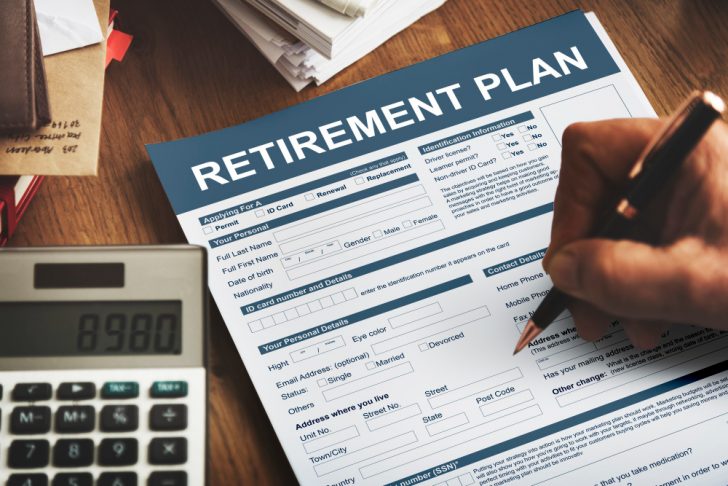
How Do Your Retirement Savings Compare to Older Generations’?

Retirement is a big milestone, but most people don’t know if they are saving enough to get there. For baby boomers, those born between 1946 and 1964, the clock has already run out or is ticking fast. Knowing how much they have saved can help you figure out where you stand and what steps to take next.
According to recent data, many boomers are coming up short. Fidelity Investments reported that in late 2024, the average 401(k) balance for working boomers was $249,300. Their IRA average was a bit higher at $257,002. These numbers only include those who are actively contributing, so they may be skewed a little high.
Fidelity found that the median net worth for people aged 65 to 74 sits at $409,900. This includes homes, investments, and savings – not just retirement accounts. But when you zoom in on retirement-specific savings, the Federal Reserve reports a median of just $200,000 for that age group. That means half of boomer households have even less.
Retirement Benchmarks Show a Big Gap
Experts often give ballpark figures to help with planning. One common guideline comes from Fidelity, which suggests you should have 10 times your salary saved by age 67. For someone earning $65,936, which is the median salary for people nearing retirement, that comes out to about $659,360.

Freepik / The average American thinks they will need even more. A recent Northwestern Mutual survey found that people expect to need $1.26 million to feel comfortable after they stop working.
A different survey from Bankrate backs this up, showing that over a third of workers believe they will need at least $1 million.
With most boomers falling well below those targets, the math doesn’t look great. Around 40% of them say they are at least somewhat likely to outlive their savings. That risk could mean cutting back on expenses, relying more on Social Security, or even heading back into the workforce in their later years.
What This Means for Your Retirement
Seeing these numbers might feel overwhelming, but there is also some good news to be found. They can help you set realistic goals and stay motivated. Retirement planning isn’t one-size-fits-all, and your ideal savings number depends on how you want to live.

Freepik / Most experts recommend planning to spend about 70% of your current income each year in retirement. That gives you a solid base while allowing room for healthcare, travel, or hobbies.
Of course, your health, location, and debt also play a role in how far your savings will go.
Even boomers admit they aren’t where they hoped to be. A 2025 survey revealed that 3 in 5 workers feel behind on retirement, including 64% of those aged 55 and up. If you are in the same boat, you are not alone. You still have time to change course.
However, getting on track starts with saving consistently. Experts suggest putting away 10 to 15% of your pre-tax income each year. If that sounds like a lot, start small and increase your savings rate by 1% every year. It adds up faster than you think.
Make the most of tax-advantaged retirement accounts. If your employer offers a 401(k) with a match, take it. After all, it is free money. You can also open an IRA and invest in a mix of stocks and bonds that match your risk tolerance and age. The earlier you start, the more time compound interest has to work its magic.
More in Business
-
`
America’s Billionaires Get Older—Millennials Wait for Wealth Transfer
Many of today’s billionaires don’t match the youthful tech-founder image often portrayed. While names like Elon Musk, Sam Altman, and Mark...
September 21, 2025 -
`
Can President Trump Legally Fire Fed Governor Lisa Cook?
Lisa Cook is right in the middle of one of the most explosive legal battles in Washington. President Trump wants her...
September 20, 2025 -
`
Jeff Bezos’ Advice for Millennials Who Want Financial Success
Millennials today have grown up in a world where instant access to products and services is the norm. From two-day deliveries...
September 13, 2025 -
`
Maison Margiela’s First-Ever Celebrity Campaign Stars Miley Cyrus
Miley Cyrus just changed the rules again. In August 2025, she became the first celebrity ambassador in Maison Margiela’s 37-year history....
September 12, 2025 -
`
Should You Rely on AI for Financial Advice? Here’s What Financial Experts Say
AI is everywhere right now, and yes, that includes your wallet. From budgeting to retirement planning, tools like ChatGPT, Google Gemini,...
September 6, 2025 -
`
95% of Businesses Report Zero Returns on In-House AI, MIT Study Shows
U.S. companies have funneled an estimated $35 to $40 billion into internal AI projects. Yet according to a new report from...
September 6, 2025 -
`
Why Americans in Their 80s Are Still Job Hunting
Charles Meoni, at 82 years old, believes he still has the skills to drive an 18-wheeler. Yet he faces rejection after...
August 30, 2025 -
`
Are Bitcoin & Ethereum the Right Inflation Hedge You Can Count On?
An inflation hedge is something that keeps or gains value when the cost of living goes up. People used to say...
August 30, 2025 -
`
Walmart Pays Top Tech Talents Up to $370K as AI Wipes Retail Jobs
Walmart is throwing serious money at tech talent, up to $370,000 a year. As AI wipes out many traditional retail jobs,...
August 23, 2025















You must be logged in to post a comment Login